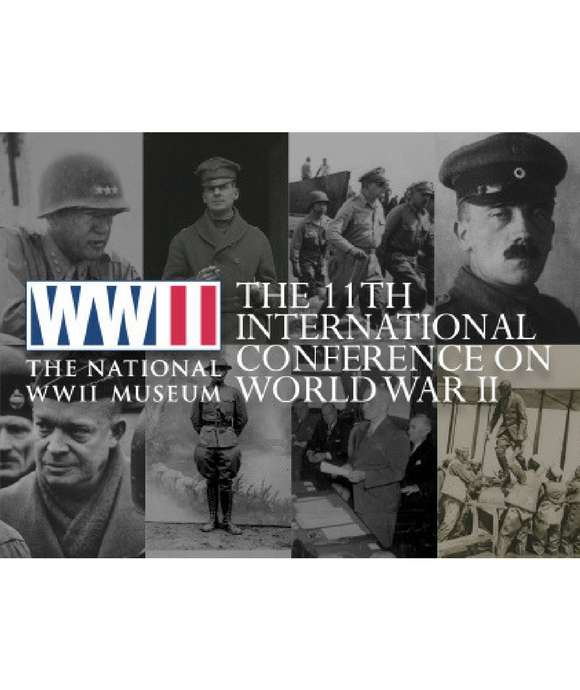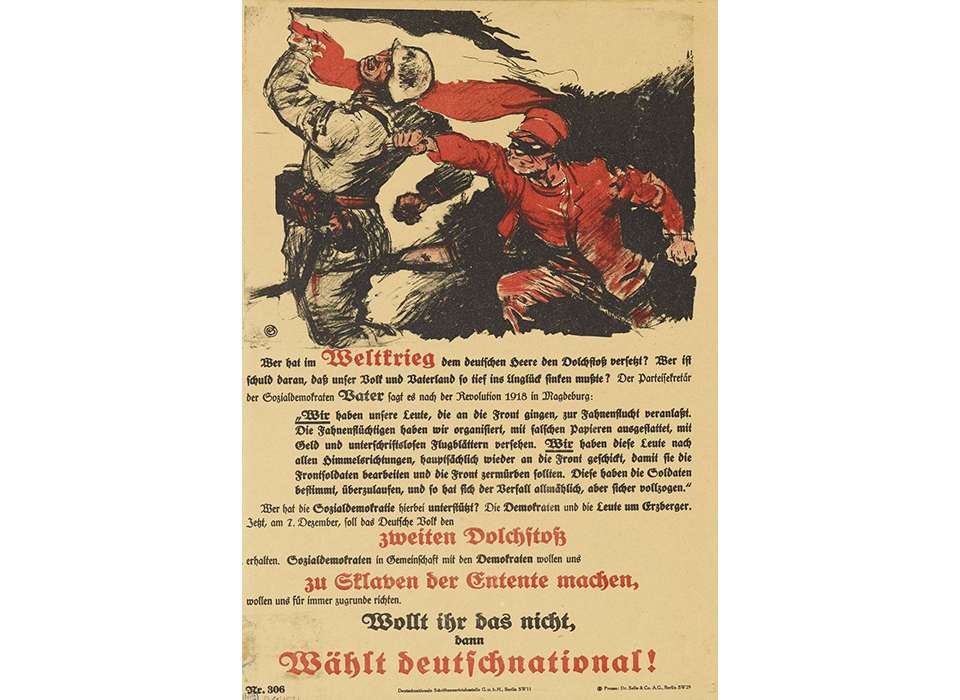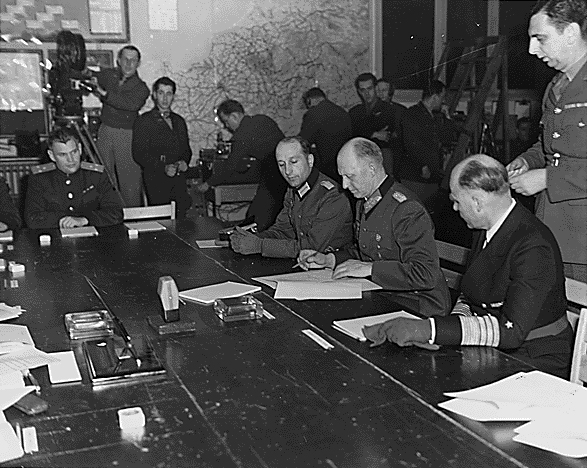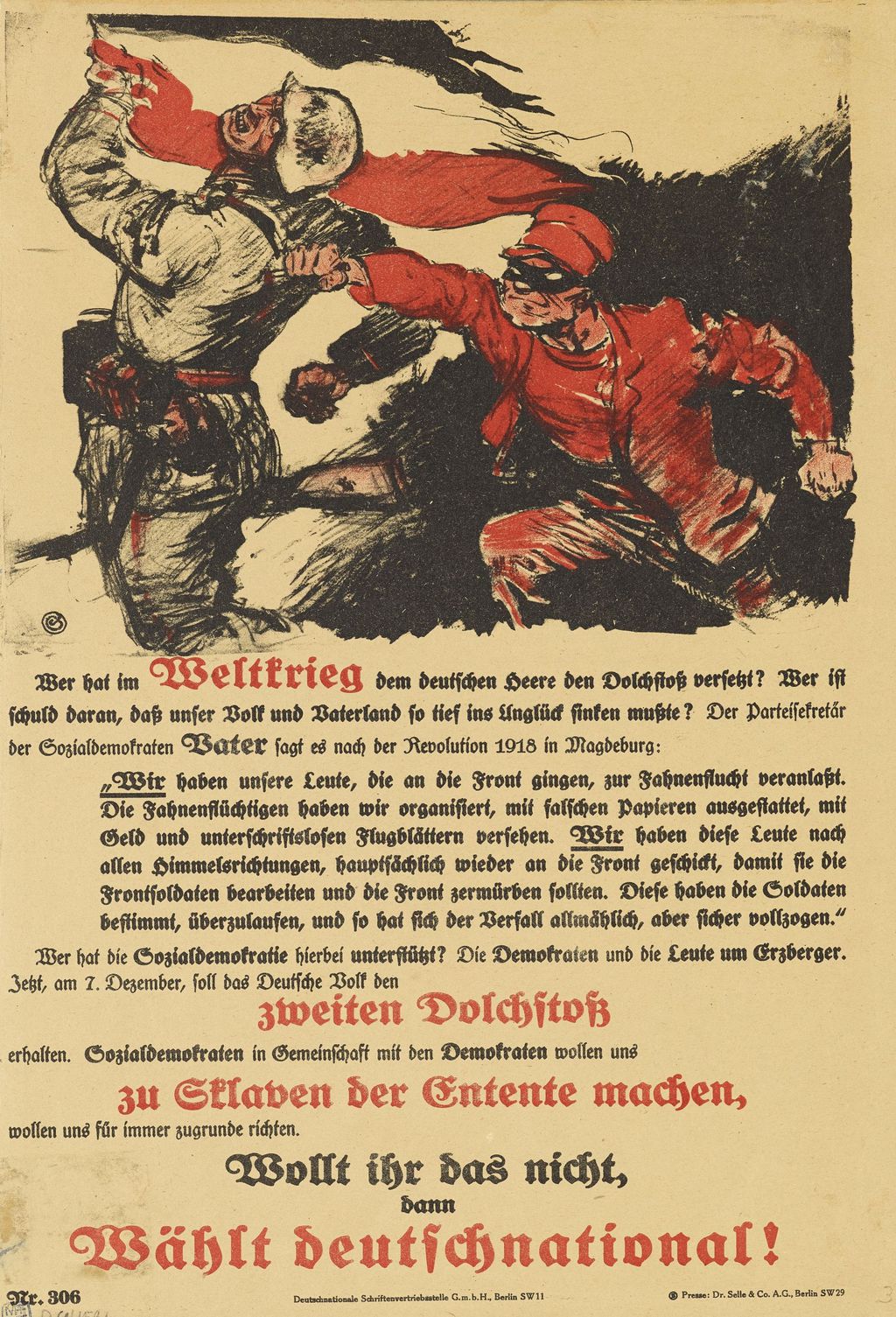Everyone’s been there: something breaks at home, you try to play handyman and fix it, but you only make it worse. Maybe it’s a leaky pipe or a faulty light switch. Just be sure you know what you’re doing, or you might find yourself swimming for your life—or on fire.
The 1920s were a lot like that. A war had just ended, one so immense that people at the time labeled it the “Great War.” Fought to solve a specific problem—an overly aggressive Germany—the conflict took on a life of its own. The fighting stretched on for years and killed millions. The whole world suffered, and in the end, winners and losers weren’t all that easy to tell apart. Defeated Germany soon recovered its strength and became even more aggressive, neighboring powers grew even more fearful, and it wasn’t long before they were all fighting again. The Great War was supposed to be the “war to end all wars,” but it didn’t come close. One wise observer, Marshal Ferdinand Foch of the French army, got it just right. Perusing the terms of the Treaty of Versailles, which officially ended the war in June 1919, he stood up from the table and declared that it wasn’t a peace at all, but a mere “twenty year’s armistice.”
Signing of the German surrender in Reims, American Headquarters. From left to right: Major Wilhelm Oxenius (Colonel General Jodl's Adjutant), Colonel General Alfred Jodl, Chief of OKW Operation Staff (who signed the Instrument of Surrender on behalf of the OKW), General admiral Hans-Georg von Friedeburg, Commander-in-Chief of the German navy (OKM), Major General Kenneth W. D. Strong (standing).
Twenty years later, in 1939, Foch looked like a prophet.
But why? Why did World War I lead, with seeming inevitability, to World War II?
Let’s start with Germany. Although the country lost World War I, many Germans refused to accept defeat. When the armistice ended the fighting on November 11, 1918, German troops still stood everywhere on enemy soil: in Belgium, France, and Russia. Years of Allied blockade had weakened the German economy and led to near-starvation conditions among the civilian population, but there never was a climactic “battle for Germany” that saw the Allies drive deep into the Reich. In modern parlance, the Allies didn’t put “boots on the ground” to teach the Germans the error of their militarist ways. In fact, many Germans focused their anger for the defeat not on the Allies, but on revolutionary groups on the home front who had overthrown the emperor, Kaiser Wilhelm II, at war’s end. They weren’t defeated, many Germans argued, but betrayed, “stabbed in the back.”
Election poster of the Deutschnationalen Volkspartei (the German National People's Party) in 1924 with the trope of the German soldier being “stabbed in the back.” Here, the poster for the conservative party depicts the “November criminal” (see the mask) as a socialist (he is wearing red).
Indeed, one political rabble-rouser, a veteran soldier returned from the front and eager to avenge the defeat, rode that very slogan to political power. His name was Adolf Hitler.
Or take the Versailles treaty. Drawn up by the Allies and forced on Germany without negotiation or possibility of amendment, the pact outraged most Germans. They rejected what they saw as the hypocrisy of the Allied powers, who claimed to be fighting for the high ideal of “making the world safe for democracy,” but seemed more interested in a good old-fashioned punitive peace. Germany had to disarm, hand over territory, and pay steep reparations to the victorious powers, essentially footing the bill for the most expensive war ever fought. The German economy teetered on the brink for the next 20 years. The country suffered a runaway inflation in 1923, recovered slowly in the mid-1920s, then plunged into absolute economic collapse with the onset of the Great Depression. Unemployment soared into the 35% range, and once again, unscrupulous politicos like Hitler were willing to stoke the rage. By 1932, his Nazi Party was the largest in Germany, and in January 1933, he became Chancellor of the German Republic.
Just 20 years earlier, young Adolf had spent Christmas in a homeless shelter. Now, his hour had struck.
What of the victorious Allies? Neither Britain nor France was blind. Both could see that Hitler was trouble. But they had their own problems. London ruled a world empire from South Africa to Singapore, the native peoples were demanding freedom, and British planners had to balance their priorities. Should they build a muscular, modern army with tanks and aircraft to fight another war versus Germany? Or a lighter force to police the colonies in Palestine and India? The question had no easy solution, and the British never did solve it. Instead, they did all they could to avoid a new war in Europe by giving in to Hitler’s demands—a disastrous path called “appeasement.”
France had its own issues. Outnumbered two-to-one by German manpower and falling further behind every year, the French solution was to build a gigantic fortified line on the border with Germany, relying on technology and firepower to make up for lack of sheer numbers. In many ways, the “Maginot Line” was the eighth wonder of the world: bomb-proof bunkers, electric lights and ventilation systems, hidden gun emplacements. Even as Hitler rebuilt the German army into an aggressive strike force of tanks and aircraft, France felt confident it had the equalizer.
And finally, toss in one last piece of the puzzle. The United States had played a key role in laying Germany low in 1918, but was missing in action in the 1920s and 1930s. Americans had backed the first war versus Germany, but didn’t feel that they had gained much from the fight. As the global situation deteriorated, US public opinion remained skeptical. “Let them solve their own problems,” was the dominant mood. And so, even as Hitler went from triumph to triumph, Washington was wedded to isolationism. The “I-word” was a policy of wishful thinking: if we ignored Hitler, maybe he’d go away. President Roosevelt saw the peril, certainly, but even the greatest politician in American history couldn’t change the public mood overnight. Only Pearl Harbor would do that.
Add it all up—a rearmed and fanatic Germany, an uncertain Britain, France hiding behind a wall, America looking inward—and you have a perfect international storm, an ideal situation for a gambler like Hitler to launch a new war.
Like an amateur doing a home repair, the Allies botched things in World War I, and World War II was the result. At least we can say that they learned their lesson, however. The next time out, they didn’t stop until the “unconditional surrender” of their enemies. The second German war ended in 1945 with Allied armies parading triumphantly through Berlin. And it’s no coincidence that we haven’t had to fight another one.

The International Conference on World War II
Rob Citino will be one of the featured speakers at this year's annual gathering of WWII scholars, students, and enthusiasts—November 29–December 1 in New Orleans.
Robert Citino, PhD
Robert Citino, PhD, is the former Samuel Zemurray Stone Senior Historian in the Jenny Craig Institute for the Study of War and Democracy.
Cite this article:
MLA Citation:
APA Citation:
Chicago Style Citation:







![Max Fuchs, New York City cantor, sings as Rabbi Sydney [sic] Lefkowitz, Richmond, VA, conducts the first Jewish services from Germany.](/sites/default/files/styles/max_650x650/public/2025-10/image1.jpg)



